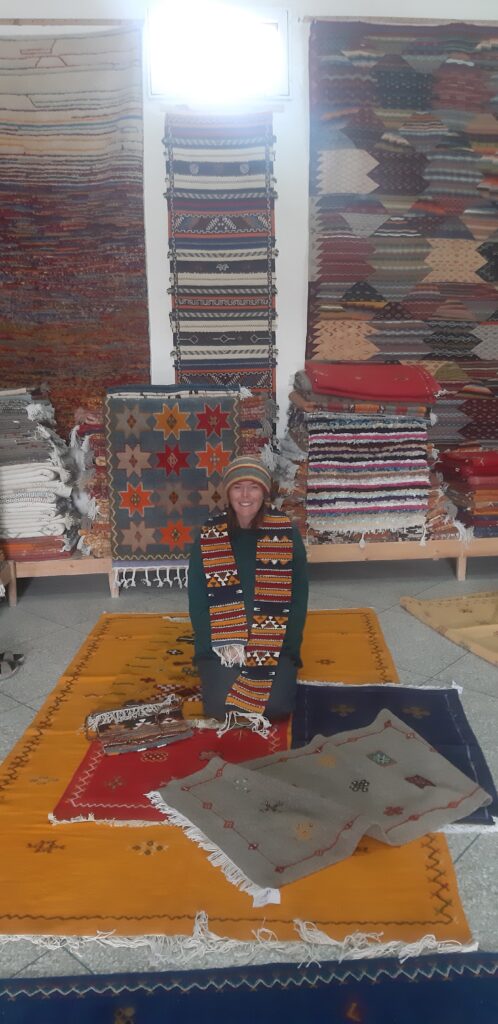The drive towards the desert became more and more scenic. We wound around mountains, passed through palm tree oases and saw many traditional mud built villages
This is Agdz
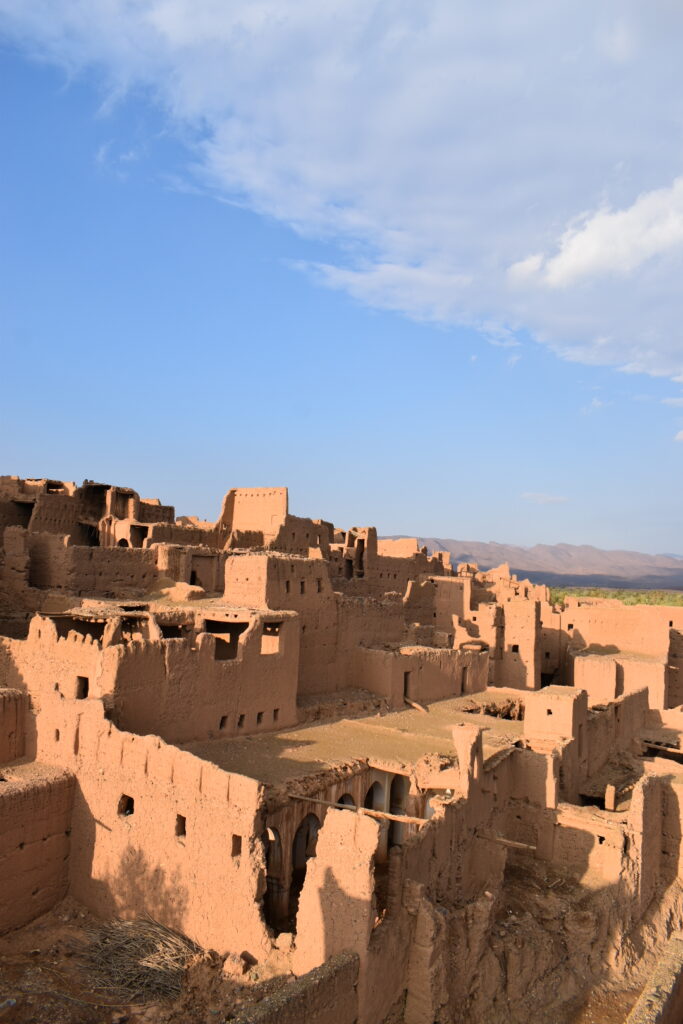
Here we happened to bump into the grandson of the last chief of the village, who offered to give us a tour, along with two Austrians who were also wondering around.
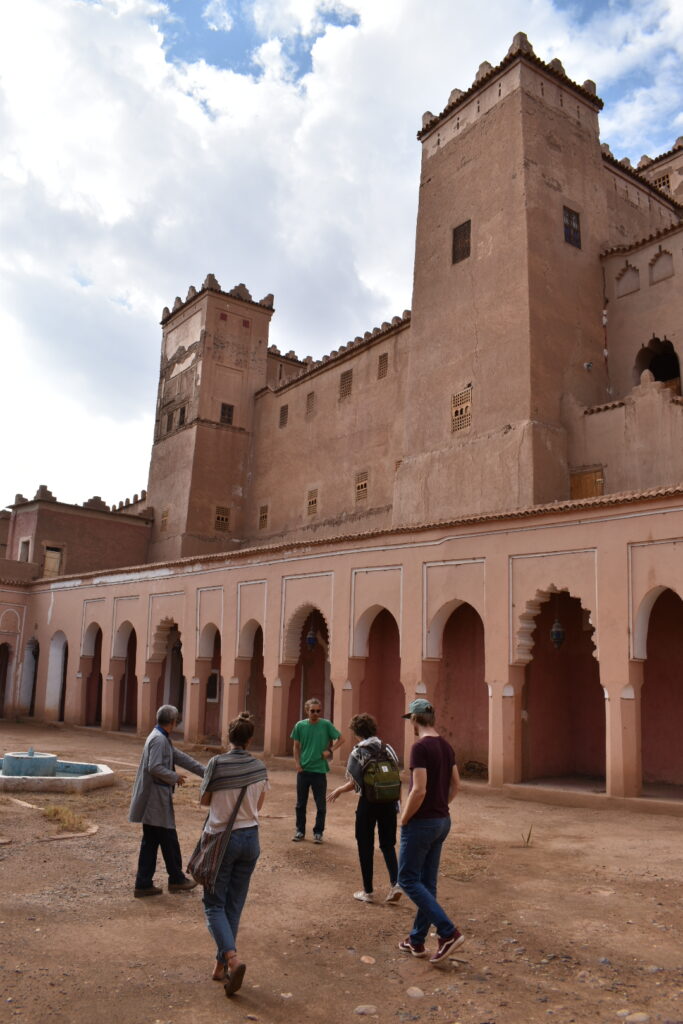
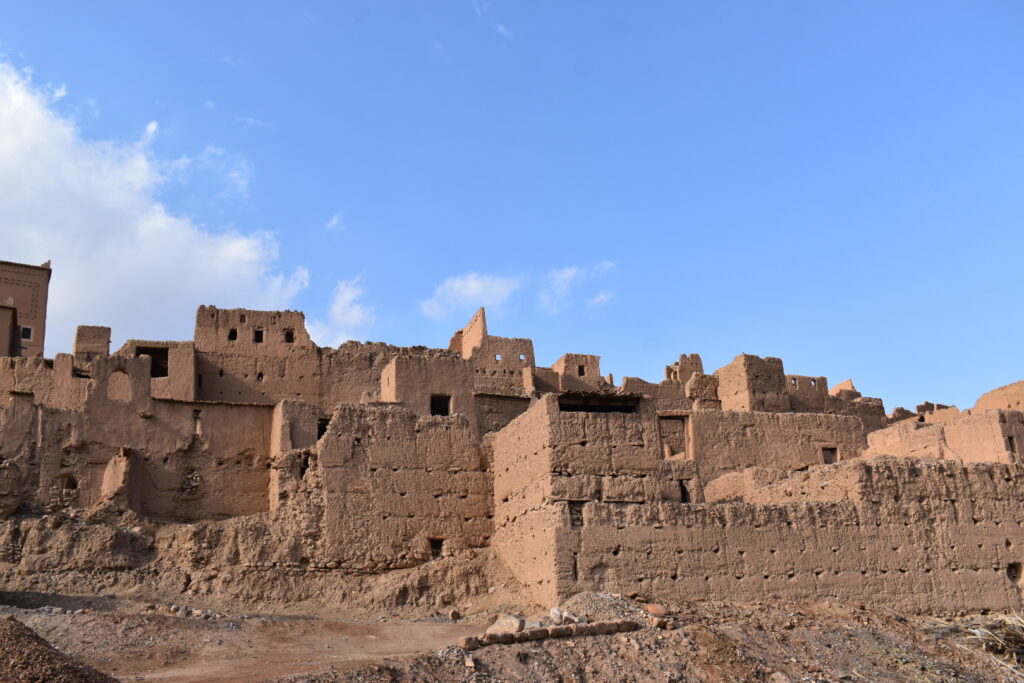
He told us that the village is called a Ksar and the big grand building is the Kasbah. The Kasbah is where the chief and his family would live.
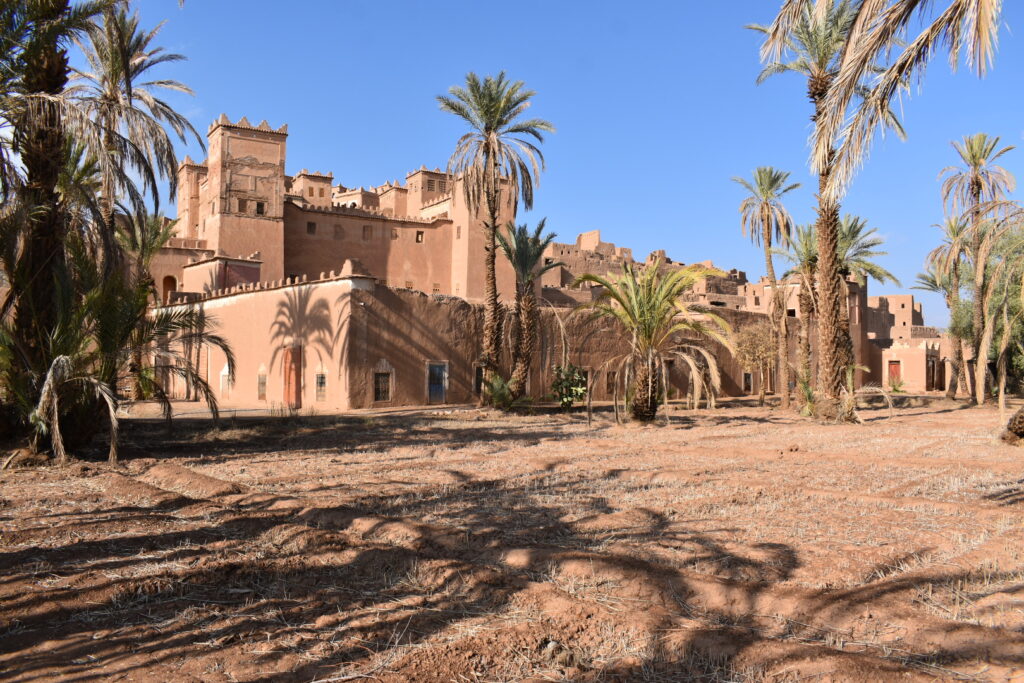
The chief was in charge of keeping everybody safe, making the rules and solving any disputes. This traditional system was used here right up until the 70s.
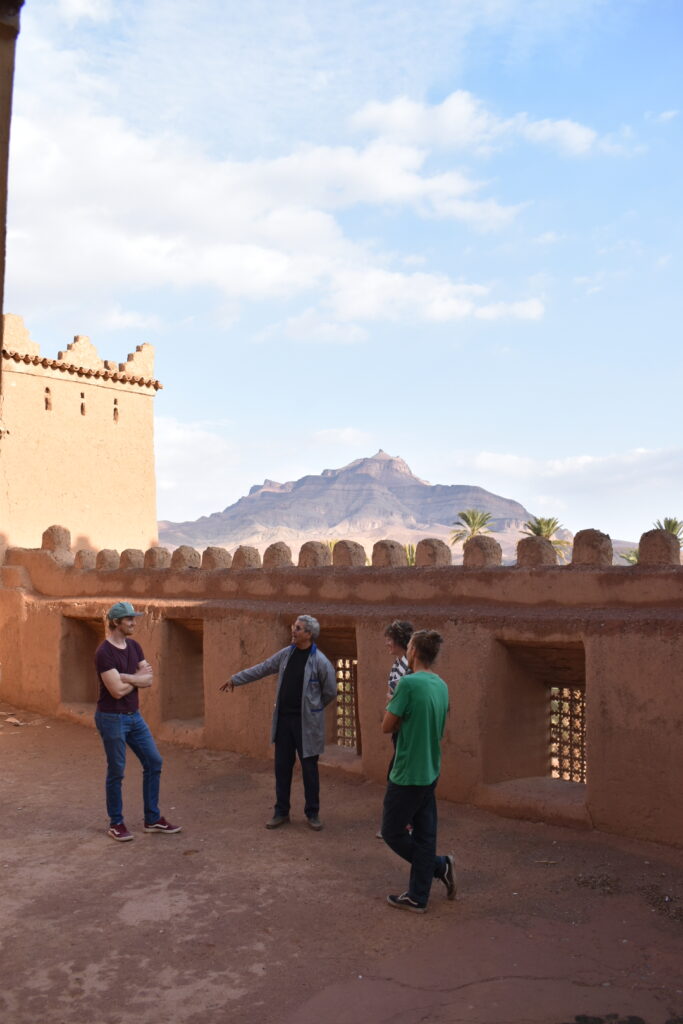
The Ksar is now abandoned. People moved into ‘new Agdz’ a kilometer or so down the road, wanting modern facilities like electricity and running water. Our tour guide thinks this is a big mistake. The traditional houses are built using natural materials which insulate well. The roofs are made of date palm wood which is flexible and so can survive even a severe earthquake. The modern buildings here are built from breeze blocks, with no insulation and are not built to a good standard. In his opinion they will not last the test of time.
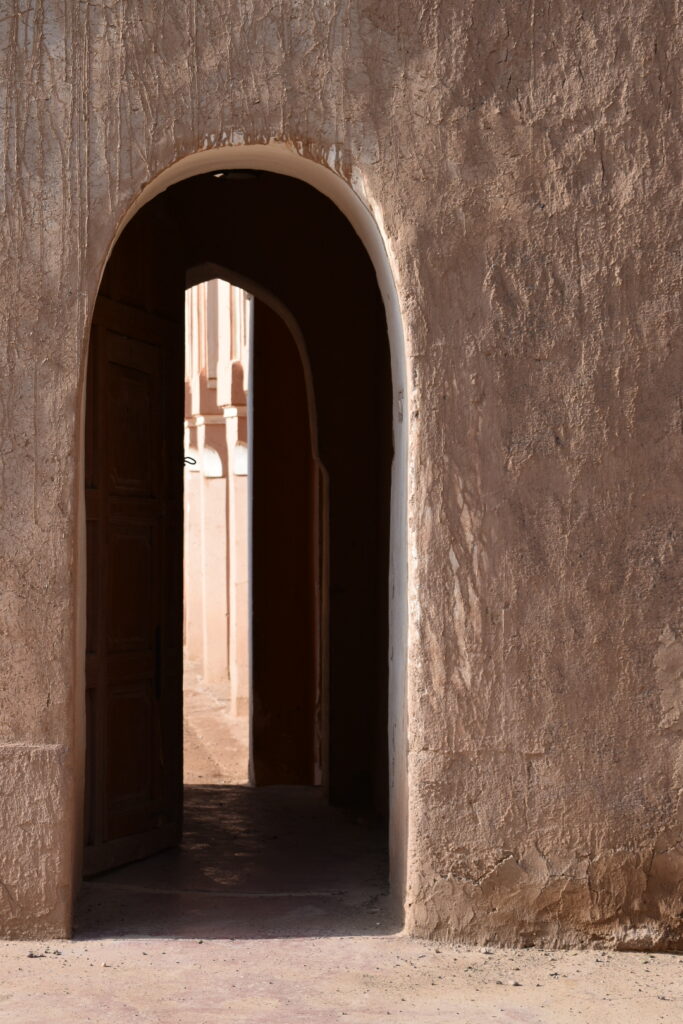
He has set up a school to teach people about building in the traditional way. Architects and construction workers from all over the world come here to learn these ancient skills. They are slowly, step by step trying to restore this Ksar and Kasbah to its former glory. They hold a music festival there each year to try and give the place new life.
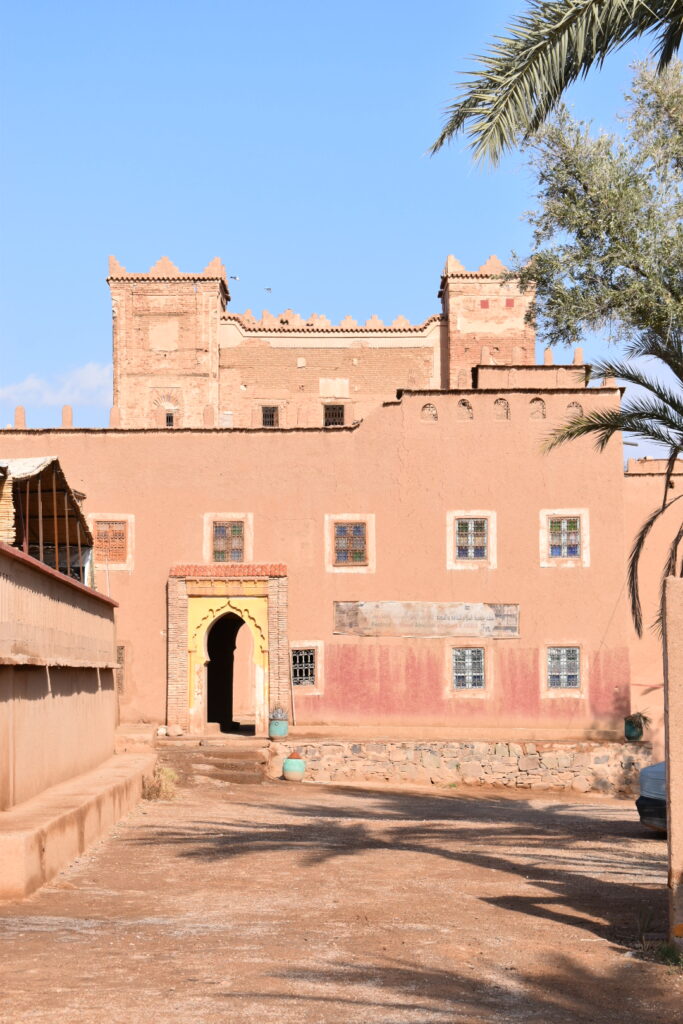
From the top of the Kasbah are amazing views over the Draa valley
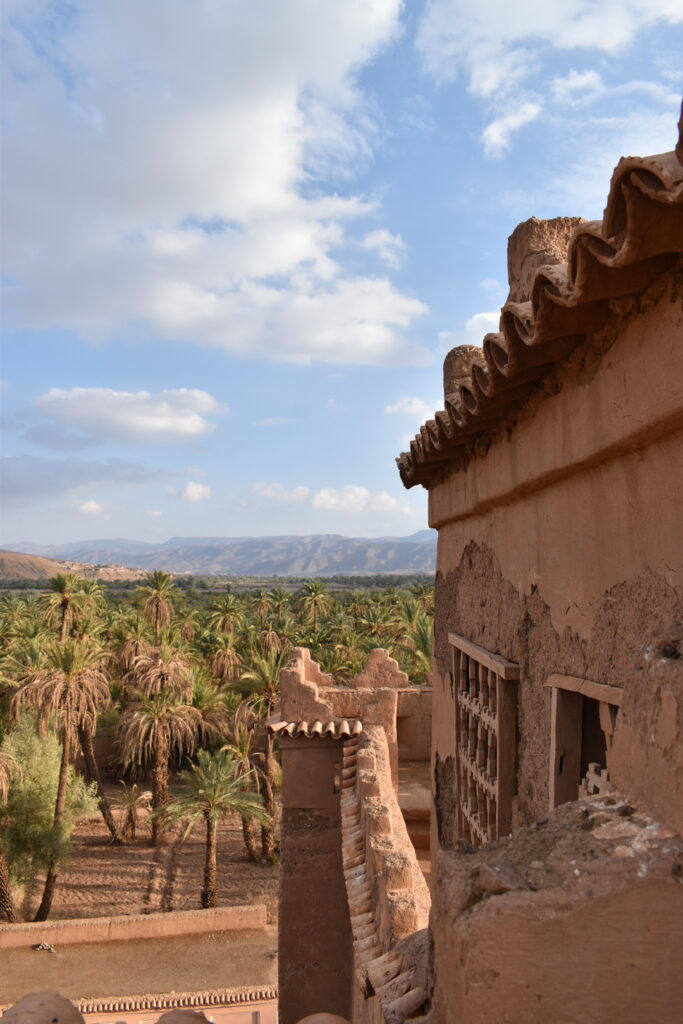
The Draa is the longest river in Morocco stretching over 1000km. It currently has no water flowing, but so far the date palms here have survived the drought.
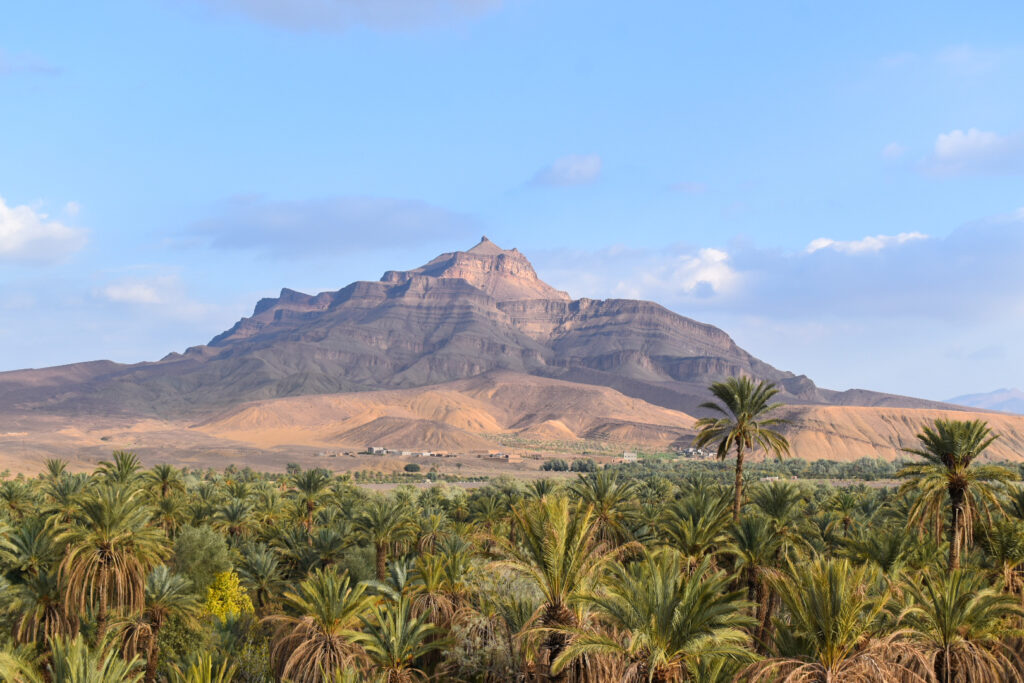
Many of the little villages and towns along the Draa are famous for their dates. We made sure to test lots of varieties and buy a few boxes to bring home
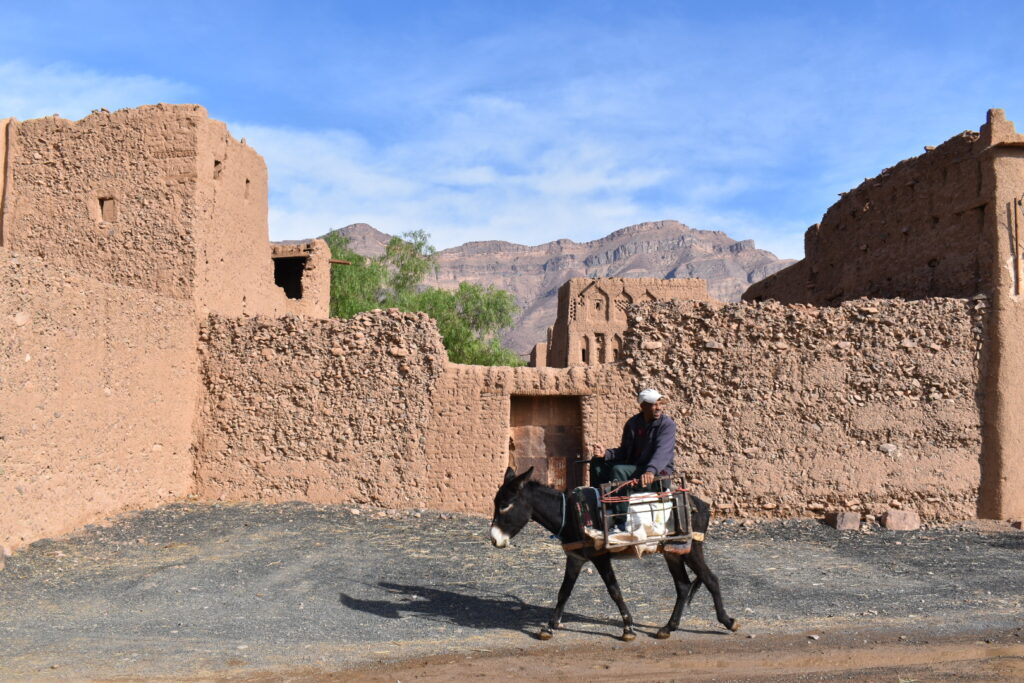
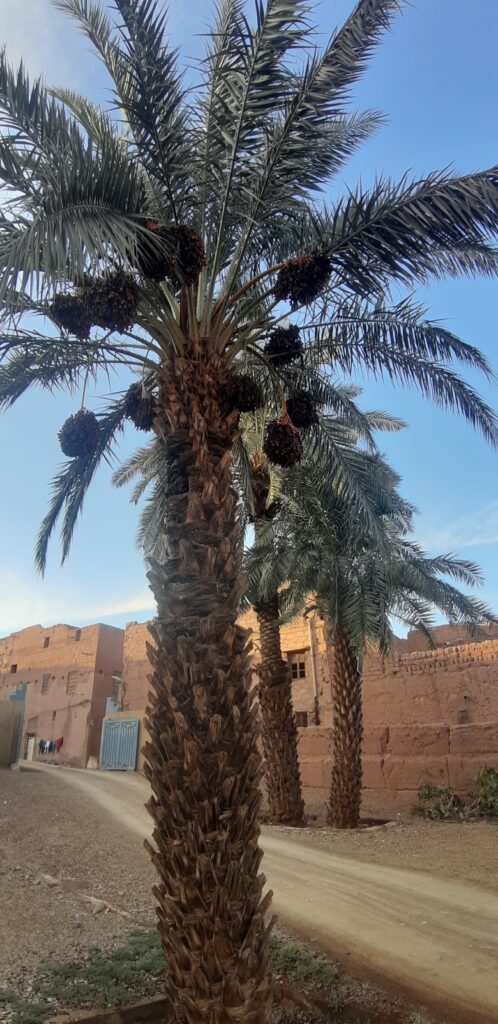
On our journey we also stopped at Tazenakt, the best place to buy Moroccan rugs ‘tapis’. The rugs are hand woven by women in the mountains and then brought down on a donkey to be sold in this little town. Rachel and I spent a happy afternoon in a rug shop, sipping on mint tea and admiring many designs shown to us by the shopkeeper. The prices here were far cheaper than anywhere else in Morocco we have seen so far. This is one of the many benefits of straying off the tourist track.
Here is Rachel feeling very happy with her purchases
